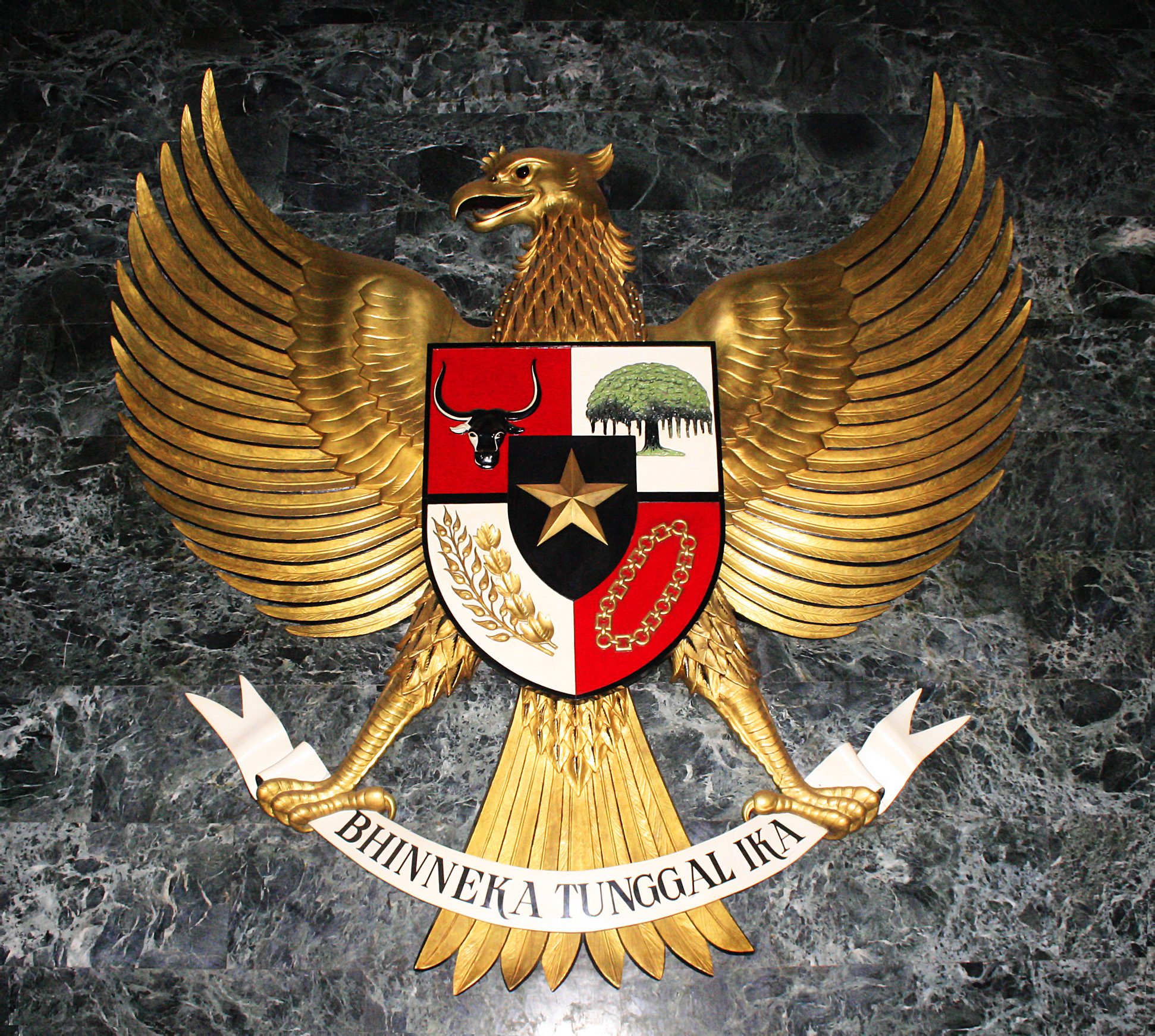National symbols of Indonesia
 Other than these official national symbols of Indonesia, there are also other symbols that widely recognize and accepted to represent Indonesia, yet does not necessarily being enforced by Indonesian laws. However some symbols that previously unofficially recognized and had not enforced by law finally gain official recognition through law edict, such as Indonesian national flora and fauna that enforced by law in 1993.
Other than these official national symbols of Indonesia, there are also other symbols that widely recognize and accepted to represent Indonesia, yet does not necessarily being enforced by Indonesian laws. However some symbols that previously unofficially recognized and had not enforced by law finally gain official recognition through law edict, such as Indonesian national flora and fauna that enforced by law in 1993.Official national symbols of Indonesia are national symbols of Indonesia that represent Indonesian nationhood. These symbols are recognized as official symbols that represent Republic of Indonesia and usually displayed in Indonesian government institution buildings, Indonesian embassies, Indonesian passport, or held by Indonesian representatives in international events, such as diplomatic or sporting events. These national symbols are enforced through Indonesian laws. The Constitution of Indonesia 1945 Chapter XV specifies the flag, official language, coat of arms, and national anthem of Indonesia. The Indonesian law No. 24 year 2009 mentioned about the Indonesian flag, Indonesian language, national emblem of Indonesia, and national anthem of Indonesia.
It is a quotation from an Old Javanese poem Kakawin Sutasoma, written by Mpu Tantular during the reign of the Majapahit empire sometime in the 14th century. Kakawin contains epic poems written in metres. This poem is notable as it promotes tolerance between Hindus and Buddhists.
The national flag of Indonesia, which is known as Merah-Putih in Indonesian, is based on the banner of the 13th century Majapahit Empire in East Java. The flag itself was introduced and hoisted in public at the Indonesian Independence Day ceremony, on 17 August 1945. The design of the flag has remained the same ever since.
| In addition, Indonesia national tree. | also recognized Teak as the - |
Other than national symbols that officially represent Indonesia and enforced through law, there are also other symbols or icons that widely accepted to describes or represents Indonesia. It might derived from Indonesian monuments, the popular architectural landmarks of Indonesia, or it might be some of popular aspects of Indonesian culture.
If Cambodia have Angkor Wat, India have Taj Mahal and China have their Great Wall, Indonesia could easily refer to Borobudur as its own unique landmark and monument designated as national symbol. An important architectural wonder and also World Heritage site recognized by UNESCO. However the monument that represent Indonesian nationhood is actually the Monas in Central Jakarta, although today it is mostly associated with the capital Jakarta instead. Other ancient temple of Prambanan also might be used as national symbol, although often overshadowed by Borobudur.
Other vernacular architectural features that often used to describe Indonesia are pagoda like multi-tiered Meru roof of Balinese temples, and traditional houses such as Minangkabau's Rumah Gadang and Torajan's Tongkonan.
Some of traditional Indonesian culture, artworks, artforms, and traditions are often widely recognized and promoted to represent Indonesia. Some of popular Indonesian artforms are Balinese dance, Wayang, Gamelan and Keris. Although some might be shared with culturally similar neighboring country such as Malaysia, for example keris is also can be found in Malaysian and Brunei culture.
For the culturally and ethnically diverse nation such as Indonesia, the national dishes aren't just staple, popular or ubiquitous dishes such as Nasi Goreng or Gado-gado. It may also be considered as the dishes that transcend cultural and ethnics differences, yet still retain common Indonesian cuisine traits. It has to be able to cross boundaries of diverse Indonesian culture and ethnic groups. As a result, it is impossible to nominate a single national dish of Indonesia. Sate and Soto are good examples of Indonesian national dishes, since there is no singular satay or soto recipes. Both dishes have myriad variations and recipes and are adopted regionally across Indonesia.
Related Sites for National symbols of Indonesia
- National Country Symbols_National Symbols Of All Countries read National symbols of Indonesia
- National symbols of France, National Flower - lilly flower ... read National symbols of Indonesia
- National Symbols India, Emblem, Flower, Bird, Flag, Anthem, Song ... read National symbols of Indonesia
- Polish National Symbols - Flag of Poland, Poland's Anthem, Polish ... read National symbols of Indonesia

Nice post. Thank u so much for sharing with us.
ReplyDeleteTBSE Madhyamik Result 2018